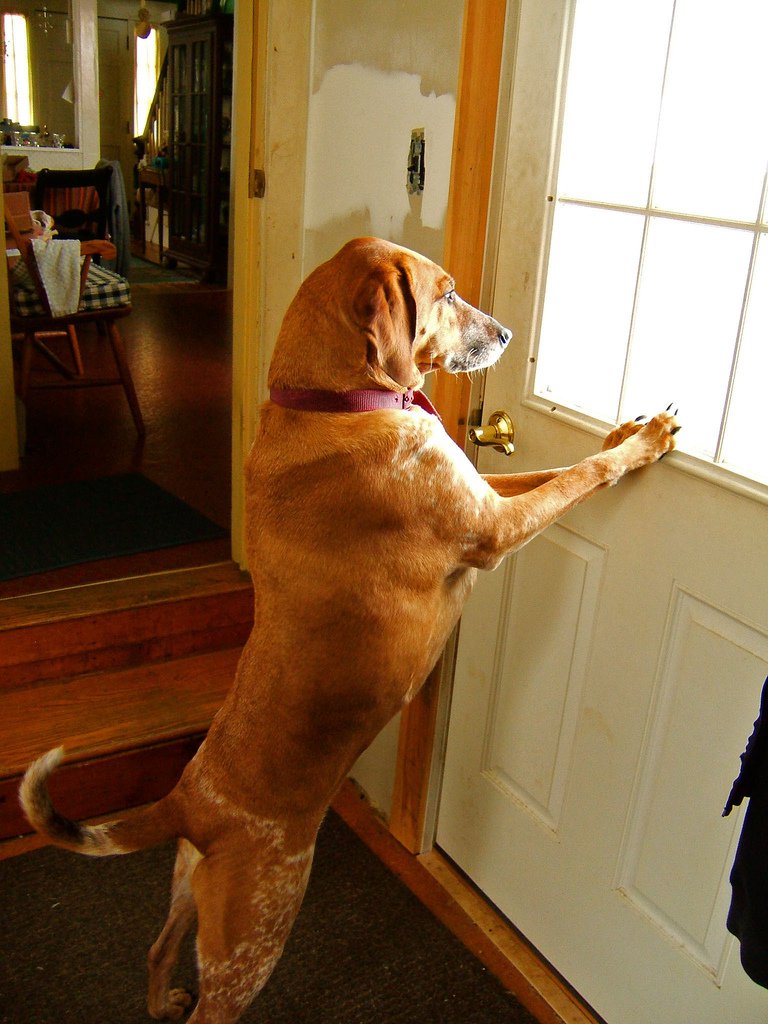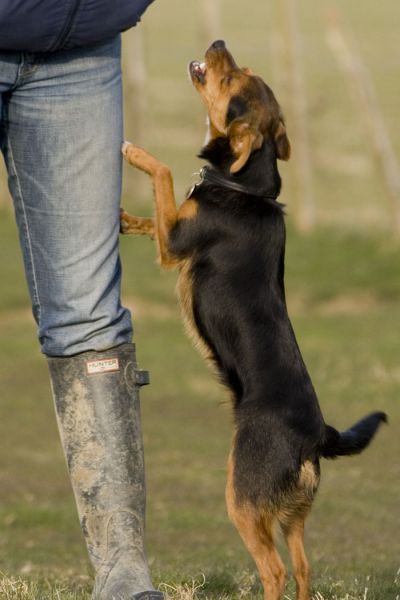
Photo: Cuteness.com
We’ve all been there. Be it age, environment, or just sheer bad-luck, there’s times when puppy can’t just help but let it all howl out. And can you blame him? That’s what they do!
Cute as that can be, what about when they start vocalizing in other ways? Whether whimper, growl, or whine, nothing can quite compare to the irritation those around us feel when our beloved gets down to barking. So what can be done? Is there hope?
You betcha! Train, reward, repeat.
According to HumaneSociety.org, there’s one simple rule to keep in mind:

Photo: The Fun Times Guide to Dogs
1. Remove the motivation.
No dog acts without motivation. Is he being rewarded when he barks? What drives his vocal outbursts?

Photo: Pets4Homes
2. Ignore the barking.
Sometimes dog bark for attention. When you give it to them, it trains them to think that this is a good way to get it.

Photo: Animal Behavior College
3. Desensitize your dog to the stimulus.
Here’s where it gets good. Here’s what the Human Society recommends:
→ Example: barking at dogs
- Have a friend with a dog stand out of sight or far enough away so your dog won’t bark at the other dog.
- As your friend and her dog come into view, start feeding your dog lots of very yummy treats.
- Stop feeding treats as soon as your friend and her dog disappear from view.
- Repeat the process multiple times
- Remember not to try to progress too quickly as it may take days or weeks before your dog can pay attention to you and the treats without barking at the other dog.
4. Teach your dog the “quiet” command.
→ Just as you can teach a dog to speak, you can teach a dog to be quiet. Have a look at the video above, teaching a dog to speak can be a wonderfully rewarding way to work with your dog!

Photo: The Other End of the Leash
5. Ask your dog for what’s called an “incompatible behavior.”
Simply put, this means swapping out a bad behavior for a good one. He can’t do both at the same time, so if he usually jumps up when someone is at the door, try getting him to go get in his bed, then work your way up. According to the Human Society:
→ Example: someone at the door
- Toss a treat on his mat and tell him to “go to your place.”
- When he’s reliably going to his mat to earn a treat, up the ante by opening the door while he’s on his mat. If he gets up, close the door immediately.
- Repeat until he stays on his mat while the door opens.
- Then increase the difficulty by having someone ring the doorbell while your dog is on his mat. Reward him if he stays in place.

Photo: Guff.com
6. Keep your dog tired.
A tired dog is a good dog! A frustrated dog is much more likely to bark out of boredom or frustration. Long walks, ball play, and even interactive toys if you’re busy– you know the drill!
